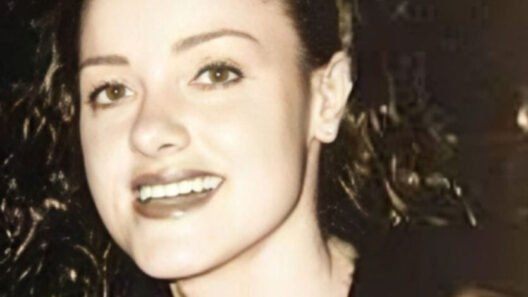Introduction: The Sensation of Jasmine Tridevil
In 2014, a peculiar story captured global attention: the emergence of Jasmine Tridevil, a woman who claimed to have undergone surgery to implant a third breast. This extraordinary assertion rapidly spread across social media and news outlets, igniting a whirlwind of disbelief, fascination, and intense public discussion.
Accompanied by striking images, her narrative quickly went viral. The public found itself grappling with questions about the authenticity of such a radical body modification and the motivations behind it, catapulting Tridevil into an instant internet sensation.
Who was Jasmine Tridevil? The Woman Behind the Persona
The individual behind the Jasmine Tridevil persona was Alisha Hessler, a massage therapist hailing from Tampa, Florida. Hessler meticulously orchestrated this elaborate hoax, adopting the Tridevil moniker to lend credibility to her fabricated story.
Her motivations, as later revealed, were complex. She reportedly sought to garner significant media attention, with a specific ambition of securing a reality television show, and to ignite an internet phenomenon that would challenge conventional beauty standards.
The Alleged Surgical Procedure: A Medical Impossibility?
Tridevil asserted that she had paid approximately $20,000 for the surgical procedure, claiming it involved using skin from her abdomen to create the third breast. She steadfastly maintained that the operation was performed by an unnamed plastic surgeon, who allegedly made her sign a non-disclosure agreement.
However, medical professionals and experts swiftly voiced profound doubts regarding the feasibility and ethical implications of such a procedure. Numerous plastic surgeons declared that undertaking such an operation would be profoundly unethical and medically arduous, if not outright impossible, due to insufficient tissue and inherent risks.
Unraveling the Hoax: The Evidence Emerges
The carefully constructed facade began to crumble as diligent investigative journalists and online sleuths unearthed crucial inconsistencies. A pivotal piece of evidence surfaced from a Tampa International Airport police report, detailing a stolen luggage incident involving Alisha Hessler.
This report explicitly listed a “3 breast prosthesis” among her possessions. This discovery provided strong indications that the third breast was not a surgical implant but rather a prosthetic device, exposing the core of the deception.
Further scrutiny unveiled Hessler’s established history of orchestrating internet stunts. Her own massage business website, with a touch of irony, proclaimed her a “Provider of internet hoaxes since 2014… Specialist in massage for three breasted woman,” unequivocally cementing the hoax theory.
Media Frenzy and Public Fascination
The saga of Jasmine Tridevil rapidly escalated into a global phenomenon, propelled by its sensational nature and the swift dissemination of information across social media platforms. News outlets worldwide eagerly covered the story, often presenting it with a blend of skepticism and overt sensationalism.
This extensive media coverage vividly underscored the public’s inherent fascination with unusual and controversial narratives, particularly those that challenge established norms. The story’s explosive virality also powerfully demonstrated the internet’s capacity to amplify claims, irrespective of their factual basis.
The Aftermath and Legacy of the Tridevil Saga
Once the hoax was definitively exposed, public sentiment shifted from intrigued fascination to a palpable sense of betrayal and being misled. The incident ignited widespread discussions concerning media literacy, the rapid spread of misinformation, and the ethical responsibilities of sensational journalism.
Jasmine Tridevil’s narrative stands as a prominent illustration of an internet hoax in the digital age. It serves as a potent reminder of how effortlessly fabricated stories can gain significant traction and highlights the paramount importance of critically evaluating online content.
Conclusion: A Cautionary Tale of Viral Content
The story of Jasmine Tridevil, or more accurately, Alisha Hessler, transcends a mere bizarre anecdote; it functions as a compelling case study in contemporary media dynamics and public perception. What commenced as a pursuit of viral celebrity and a potential reality TV show ultimately culminated in a widely recognized internet deception.
Her journey vividly illustrates the ease with which individuals can manipulate public attention in the digital era and the enduring human allure for the extraordinary. Ultimately, the Jasmine Tridevil saga remains a cautionary tale, emphasizing the seductive power of sensationalism and the indispensable need for rigorous verification in an information-saturated world.








